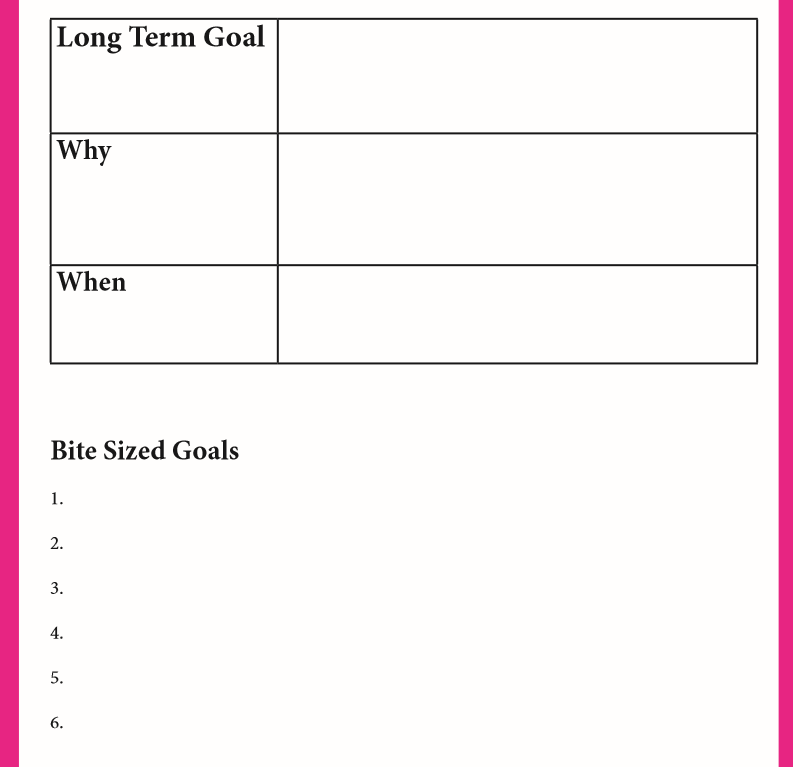Why should we set goals? If we don’t set goals our training and diet lacks purpose or direction. However if we set goals we have committed ourselves to a what, when and how. We have purpose, direction and we have found clients work best when there’s a goal to achieve.
I like to set SMART goals. So what are SMART goals? Basically SMART goals are Specific, Measureable, Attainable, Realistic and Timely. Let me break it down and give you some examples.
Specific – Specific is the what, where & when of your goal. Good examples are ‘I will lose 10kgs by March 1st’ or ’I will lose 10cms around my waist’ a bad example would be ‘I want to get fit’ or ‘I want to lose weight’. Doesn’t sound very specific does it?
Measurable- You need to able to measure your goal in some way. ‘Lose 10kgs’ or ‘Bench Press 100kg’. Taking the example above ‘I want to get fit’ is not specific and can be measured in a million different ways. When I ask clients what their goals are? The common answers are ‘I want to get fit’ or ‘I want to lose weight’.
Attainable – Your goal needs to be achievable. If you weigh 50kgs and your goal is to drop 10kg in 4 weeks it’s not going to happen however if you weigh 120kg and you want to drop 10kgs in 4 weeks it’s difficult but attainable.
Realistic – Something you’re willing and able to work towards. If you want to lose 20kgs in 12 weeks but are unable to train due to work and commitments you’re not being realistic. However if you’re willing to train 6 days a week and cook every meal then 20kgs in 12 weeks is difficult but realistic.
Timely- You should give yourself a date which you want to achieve your goal by. If you want to lose 15kgs by the end of a 12 week challenge then your date in the last day of the 12 week challenge. This creates urgency and one of the reasons Emma and I love 12 week challenges.
Now I’ll take you through my goal sheet. My sheet simply says Goal? Why? When? Bite size goals? Let me break section down for you.
For the goal: If its weight loss the client usually knows their goal. However if the client isn’t sure we simply aim to lose 0.5kg each week for 12 weeks. If the client is over 100kg then 1kg per week is possible.
For the when: If the client wants to lose 10kgs then we aim for 0.5kg each week therefore it will take 20 weeks so the date is 20 weeks from now.
For the why: The why is important because it’s the driving force behind achieving your goal. For example you may want to lose weight because your blood pressure is too high? Or you want to lose weight because you want to feel more confident and better about yourself? Both are important reasons!
Bite size goals: Bite size goals are the steps you need to take to achieve your goals. For example how often will you train? How will you eat? What foods are you going to give up? What foods are you going to take up?
Let me give you an example for all of the above.
Goal: lose 20kgs
Why: Feel more confident in myself & get my blood pressure under control
When: 6 months or July 2014
Bite size goals: train 5 days per week, 3 weights & 2 cardio, follow strict meal plan, keep food diary, don’t eat sugar or processed foods.
Most of the goals I’ve talked about have been weight loss goals. If your goal is not weight loss the same rules still apply. Instead of losing weight you may want to lose body fat percentage, lose centimetres, run a Marathon or win Fitter, Faster, Stronger. All these goals still have a What? Why? When? Bit size goals?
I hope this helps you with goal setting. Even if you’re not sure about writing goals it’s a good idea to get a pen and paper, and write down a few goals to want to achieve in 201. Writing goals makes them real and is the first step towards achieving them.

Leave A Comment